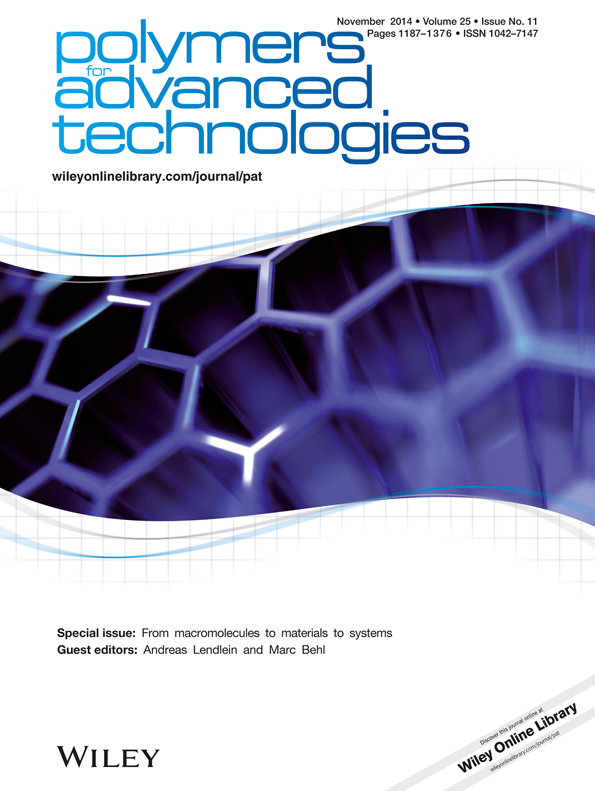Temperature and environment dependent dynamic properties of a dendritic polyglycerol sulfate†
This article is published in Polymers for Advanced Technologies as a special issue on 12th PAT Conference in Berlin, 2013, edited by Prof. Andreas Lendlein and Prof. Marc Behl, Institute of Biomaterial Science, Helmholtz-Zentrum Geesthacht GmbH, Centre for Materials and Coastal Research, Kantstr. 55, 14513 Teltow, Germany.
Abstract
Structural changes within dendritic polymer scaffolds may influence the polymer's behavior in biological relevant systems such as tissues and cells. A dendritic polyglycerol sulfate (dPGS) was recently found to act as an inhibitor of inflammatory processes. Here, we investigated the molecular dynamics and environmental sensitivity of dPGS using an indocarbocyanine (ICC) labeled variant (dPGS-ICC). The environmental sensitivity was demonstrated by UV/Vis and fluorescence spectroscopic characterization of dPGS-ICC in different solvents. In particular, fluorescence lifetime measurements revealed additional information on the local dye environment that manifest themselves in characteristic fluorescence lifetime signatures depending on the solvent. Furthermore, the interaction of dPGS-ICC with a model cell system—giant unilamellar vesicles (GUVs)—was studied with fluorescence lifetime imaging microscopy. We observed that dPGS-ICC is enriched in the membrane but does not penetrate into the lumen of the GUV. The characteristic lifetime signature of dPGS-ICC within the lipid membrane (τmean = 1.6 ns) was clearly different from that obtained for dPGS-ICC in aqueous solution (τmean = 0.42 ns) and can thus be employed to dissect differential interactions of dPGS in tissue. By using time-resolved fluorescence depolarization, we further showed that the size of dPGS shrinks by nearly 50% above 30 °C. These results contribute to a further understanding of dPGS structure and dynamics and may help to provide tailor-made polymer architectures for biomedical applications. Copyright © 2014 John Wiley & Sons, Ltd.




